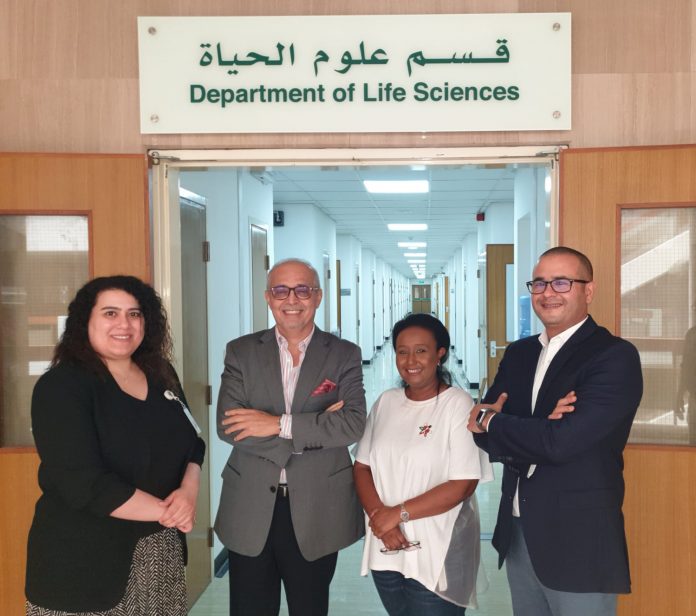A team of researchers at the Department of Life Sciences in the Arabian Gulf University (AGU) recently published an important scientific study on Coronavirus (Covid-19). Genetics, Molecular Biology and Biotechnology Professor at AGU Dr Mohammed Dahmani explained that the study took six months of work and monitored the genetic mutations of the virus from March to September 2020.
Dr Dahmani said the study showed that more than 350 genetic mutations have occurred to the Coronavirus since its spread at the beginning of this year, specifically in the (S) molecule, which the virus utilises as a key to sweep cells, adding that these mutations have contributed to reducing the severity of the virus and the strength of its spread by 80 percent.
In the same context, Dr Dahmani explained further that these mutations are similar to 350 different keys that aim to open receptors located on the surface of the body’s cells, which are similar to locks that the virus must open in order for it to enter the cell and infect it.
“These receptors (locks) have multiple (230) types are genetically determined for each person, as each of us carries one type of these locks, and with this we conclude that the efficacy of infection is related at the same time to the type of mutation carried by the virus and the genotype of the everyone’s receptors,” Dr Dahmani clarified.
The study was published on the scientific website of the Covid-19 publications of the University of Michigan’s Cold Spring Harbor Laboratory. Throughout the research period, the research team has closely monitored the mutation changes that occurred at the genetic material of the virus, especially the one related to its ability to reach the cells of the body and infect them.
The study relied on computational biology techniques, as the results showed that the genetic mutation that created the virus’s 350 mutations contributed to reducing its severity by 80 per cent, as the variables reduced the ability of the virus to communicate with the partial ACE2 receptor that is found on the surface of human cells and is utilised by the virus as a gateway to enter the cell.
Dr Dahmani commented that the study provides a scientific basis that explains the disparity between individuals and countries in the number and severity of clinical cases, adding that the study is distinguished from the previous ones as it takes into account, at the same time, the genetic mutations that occur in the virus, as well as the genetic structure of the ACE2 receptor for the patient to estimate the potential severity of infection.
He added: “This study shows that there is no type of viruses more or less infectious, nor a genetic combination that protects the individual or makes him more vulnerable to disease, but that what determines infection is the nexus between the genotype of the virus transmitted between individuals and the personal genetic type of the infected person and the molecular relations that occurs when mating.”
It is worth mentioning that the research team consisted of Molecular Medicine Specialist at AGU Dr Dana Ashoor, Molecular Biology Assistant Professor at AGU Dr Noureddine Ben Khalaf, and from Kuwait, Molecular Medicine and Post-doctoral Researcher at AGU Dr Mariam Marzouq, and assistant professor in Molecular Genetics Assistant Professor at the University of Ontario, Canada, Dr Hamdi Al Jarjanazi.

